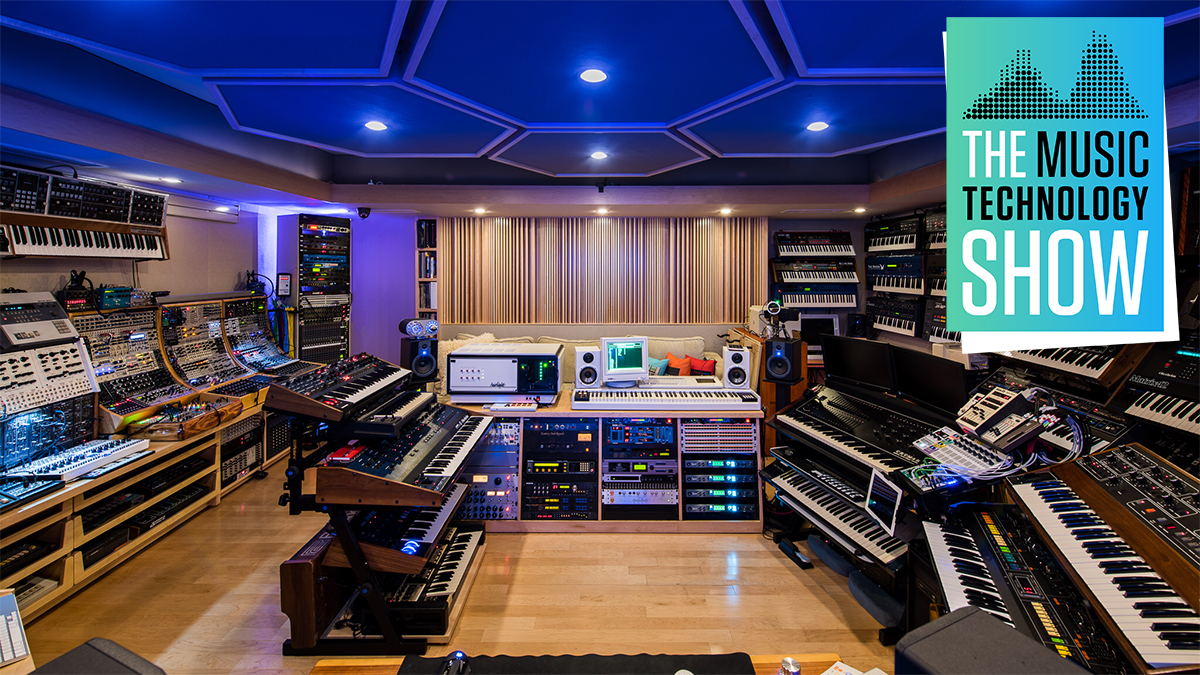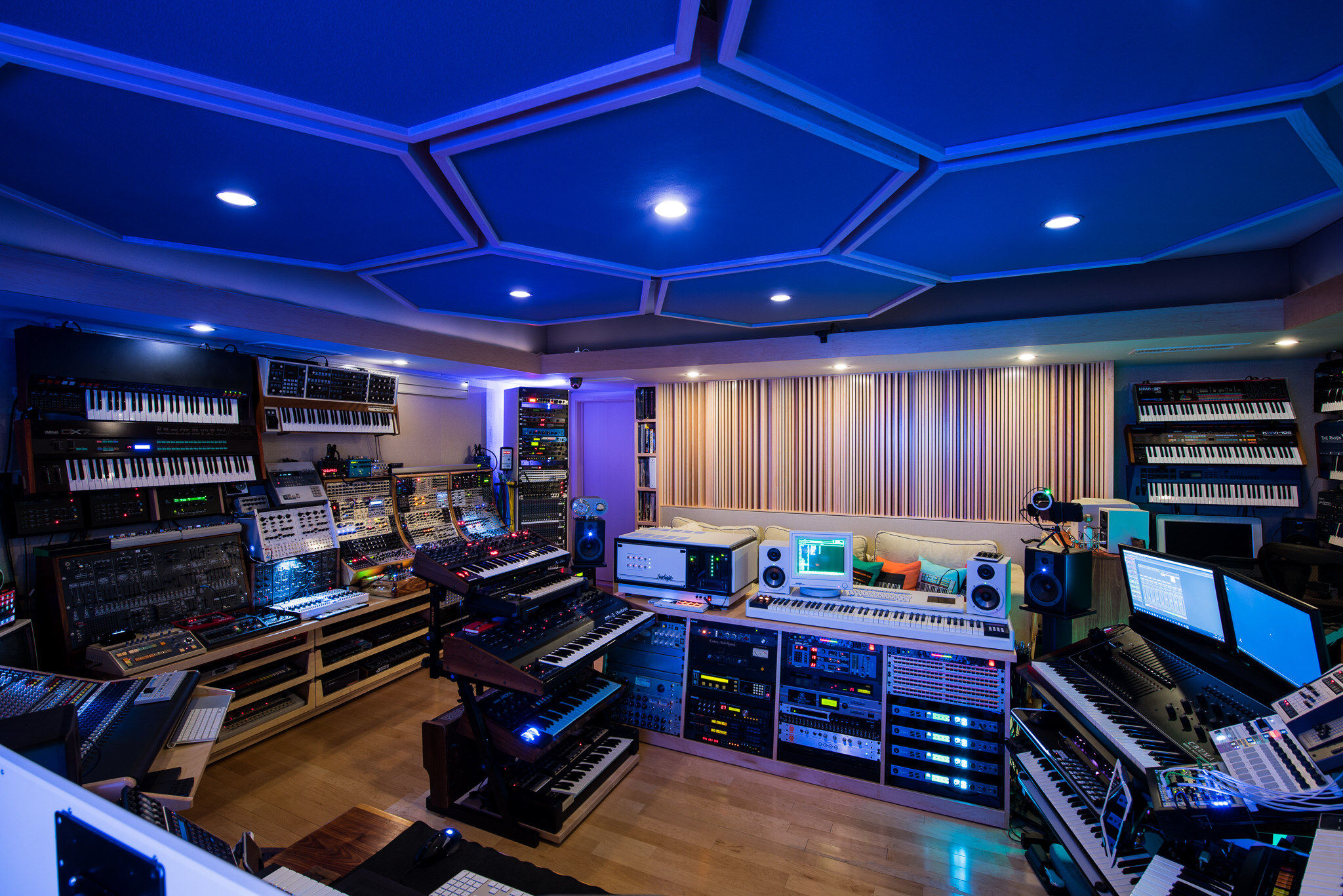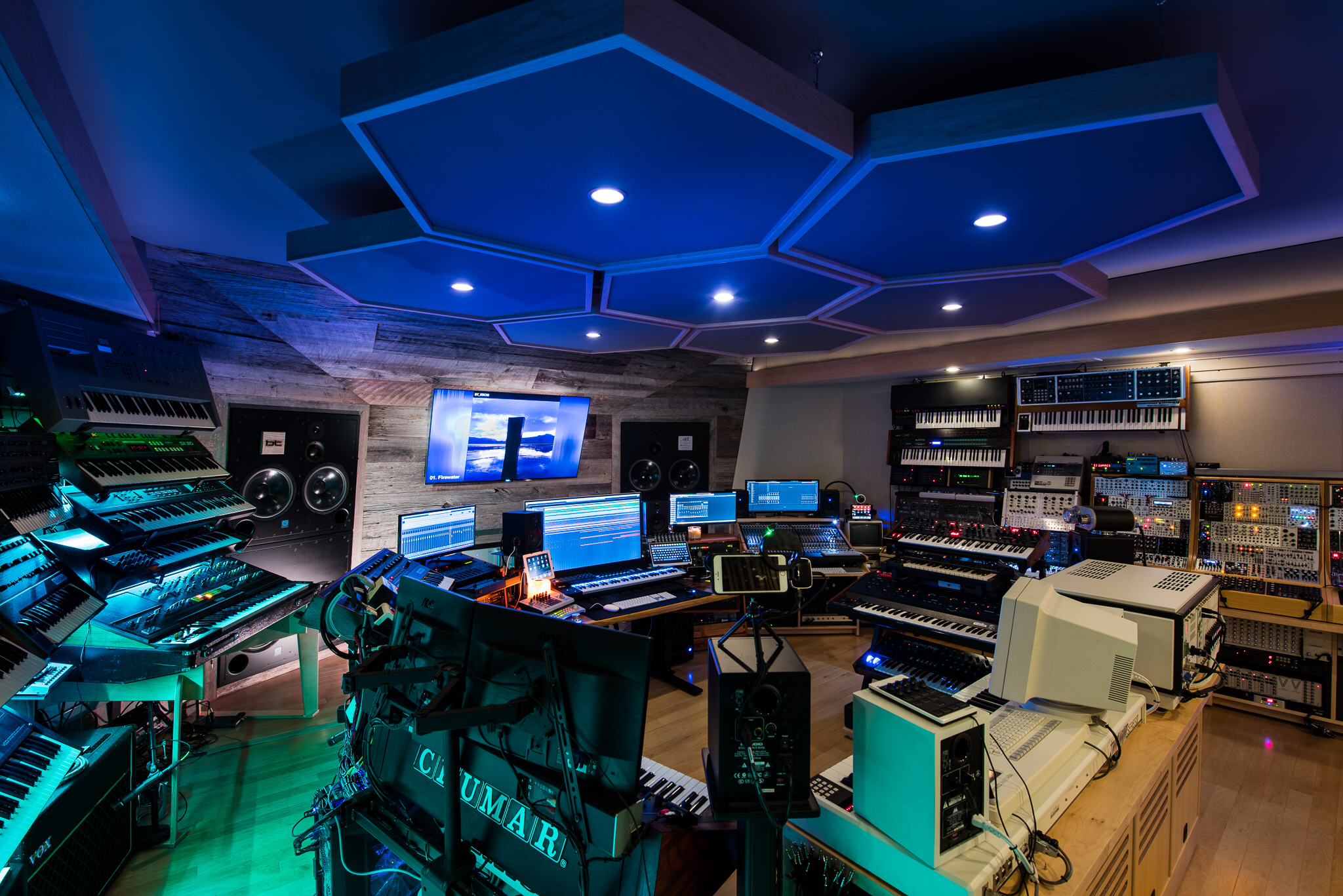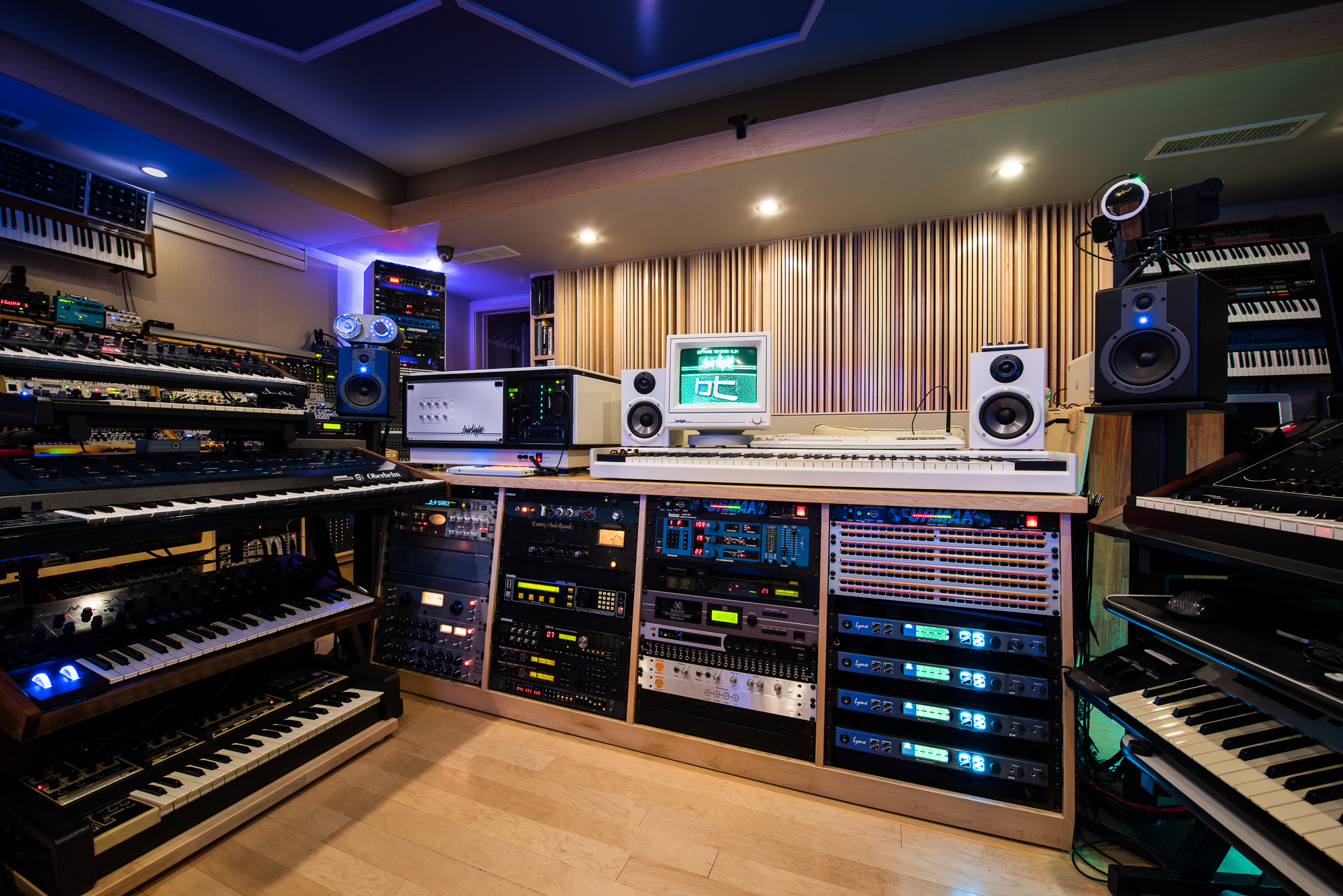BT's favourite synths of all time: "For nuance, expressive performance and playability it's probably the most elegant, lively sounding instrument I've ever played"
Brian Transeau's synth encrusted studio is awe-inspiring and has a few tales to tell

MTS 2020: While it might induce vast amounts jealousy within the wider synth-loving populace, Brian Transeau's studio is crammed to the rafters with some of the finest synthesizers ever made.
It’s as good as polys can get. If anybody thinks that people are making good sounding subtractive poly synths, I invite them to listen to Jupiter 8, you'll think otherwise in about 30 seconds.
Well known for numerous album releases and creating iZotope’s Stutter Edit sound-processing plugin and, more recently, Stutter Edit 2, BreakTweaker and Phobos with Spitfire Audio, BT's work has also veered into film soundtrack, TV and video game scoring.
He is fortunate enough to own some of the best-loved instruments thought-out vintage synth history and here, he picks out his favourites that have, no doubt, played an integral part in his glittering 25-year career.
PC audio labs VEPro pro rack mounted server
"It's like my kind of modern equivalency of a Synclavier. I run roughly a 4000 instrument Kontakt Autoload on this machine connected by Audio over IP to my main Mac rig.
"It's a PC and it has ripping fast Intel Optane SSD’s in it and nearly a half-terabyte of RAM. This (actual) supercomputer allows me to do orchestral composition and mockups in a way I've never been able to do before."
Roland Jupiter 8
"It's a Rev2, 12-bit Jupiter 8 and is probably my favourite subtractive analogue synthesizer ever made. It's one of the most beautiful synthesizers ever made aesthetically as well.
"The Rev2 is just an unbelievable instrument. I've used it on everything from Flaming June to film scores to the track that I just produced for Howard Jones.
Want all the hottest music and gear news, reviews, deals, features and more, direct to your inbox? Sign up here.
"It’s as good as polys can get. If anybody thinks that people are making good sounding subtractive poly synths, I invite them to listen to Jupiter 8, you'll think otherwise in about 30 seconds. "

Yamaha CS-80
"Considered by many to be the Godzilla of polyphonic synthesizers. I wouldn't pick it above and Jupiter because the Jupiter is significantly more versatile. That said, in so far as nuance, expressive performance and playability are concerned it is probably the most elegant, lively sounding instrument that I've ever played.
"I’ve been using it a lot on the video game I'm scoring right now and the engineers keep emailing back and saying 'What is that sound?' playing these lead lines and, of course, you know that sound from you know things like Blade Runner and 1492 and Chariots of Fire and all Vangelis compositions.
"They’re like unicorn tears now but I got mine quite some time ago and am so glad I’ve kept it."
Prophet-5 Rev3
"It's another one of my favourite polyphonic synthesizers ever made. It's more of kind of a one-trick pony ish than the Jupiter-8, I would say, but the sound it makes is just so freaking incredible.
"Just that round, warm sort of Japan David Sylvian vibe. The Peter Gabriel early '80s kind of just rich warmth that you could never in a million years have to do with an instrument in the box."

Vintage MiniMoog Model D
It's still something that kind of baffles me how great it sounds.
"There's nothing else in the world I'd like to do bass with than the Model D, except for maybe sometimes live bass on the odd occasion."
"The Minimoog doesn't make much sense actually. It's way more than the sum total of its parts. It's like, 'okay, it's got a couple of oscillators, a noise generator and a ladder filter. Why does this thing sound like a frickin' earthquake?' So it's still something that kind of baffles me how great it sounds."
ARP 2600
"This ARP was owned by Pink Floyd. It’s just an unbelievable sounding truly magical instrument.
"Not only does it sound incredible and force a certain way of thinking when working with it, but it’s also patchable and semi-modular.
"I put a bigger spring reverb and bandpass filter modification into it. I've done whole pieces just with the 2600."
Oberheim OBXa
"Which is my favourite of the Oberheim family. I've got a lot of Oberheim stuff and OBXa is easily my favourite. Which is really saying something because the Matrix 12 is insanity.
"Just the sheen of the filter in that thing and how bright and cutting the sounds are; you can put the resonance fully up and have the filter nearly fully open and instead of self-oscillating. It just adds this eight to kind of 10k presence and sheen on sounds that's like just it's a remarkable instrument.
"So much vibe it boggles the mind. The auto-tuning methodology is really rudimentary, so it's always a little bit out of tune but in the best possible way."

Oberheim SEM 2 Voice
"I have four voice as well, but something about working with those two, and some rudimentary step sequencers; like having a row of eight to do filter modification and then a row of eight to the pitch is just instantly my favourite kind of '80s ostinato type sound.
"I'm going to pick another instrument actually to go with it because I keep them together. And I've got a 4 x 16 Lane sequencer that I use with these two instruments, and it's just this incredible little sequence station."
Roland System 100A
"Absolutely nothing sounds like the attack transients of that instrument. It's kind of instantaneous Speak and Spell Yaz era you know... Vince Clarke.
"It has the snappiest attack transients of any of the synthesizers have ever heard. It’s one of the very few things that have to time correct in a different way because there's this really unusual pre-attack transient I like to leave in.
"It’s a real part of the character of the sound, it's quite literally electrons firing through circuits."
cSound
It's open-source free software. It is a programming language for digital signal processing, operations, and instrument design. And I've written entire pieces of music in it.
"I wrote close to 80,000 lines of code for a song called All That Makes Us Human Continues off my album, This Binary Universe.
"The entire piece was composed and Csound. I use it for design and prototyping for a lot of my software and for sound design all the time.
"In scores and albums and quite literally have probably used Csound on just about every single piece of music that has gone through my hands

Fairlight CMI III
"One of my great loves is vintage samplers. I just love the workflow that comes from sampling outside of the computer and having limited memory with limited available instruments.
"The Fairlight (like how I described the Minimoog) is just way more than the sum total of what you put into it. You can sample a saw wave out of a Prophet-5 in the Fairlight and because there's no word clock between the different voice cards, everything is inherently fluctuating and running these slightly off sample rates.
"Pressing the same key repeatedly and firing through the different voice cards and having that voice allocate to each card - the Curtis filter chip is calibrated differently.
"The support circuitry, the capacitors are different ages and no how matter how much time you spend calibrating, every single one of those voices sounds unique and different. The sample of a string sound or a saw wave on a Fairlight is just the freaking biggest sound you've ever heard in your life. It's mental.
My monitor was broken and the incredible Stewart Copeland was kind enough to give me The Police's touring Fairlight monitor.
"It’s one of my favourite instruments ever made. I am a noob with sampling on it but I'm quickly learning page Rs. And I've actually been engaging with some of the greatest Fairlight users since kind of the beginning of Fairlight history and I'm privately working with a handful of people that made some of my favourite records ever.
"They're teaching me their ways! So really pretty cool. I spent four years refurbishing it from the metal to laser matching the paint, recapping the entire instrument and every voice card, rebuilding the power supply, installing new fans on it, retro-brightening the keys - it’s been a crazy labour of love.
"My monitor was broken and the incredible Stewart Copeland was kind enough to give me The Police's touring Fairlight monitor. The keyboard itself was used for the sound effects and sound design on Tron, so this machine has got a pretty remarkable history."

BT's The Lost Art Of Longing is available now.



I take care of the reviews on MusicRadar and Future Music magazine, though can sometimes be spotted in front of a camera talking little sense in the presence of real musicians. For the past 30 years, I have been unable to decide on which instrument to master, so haven't bothered. Currently, a lover of all things high-gain in the guitar stakes and never one to resist churning out sub-standard funky breaks, the likes of which you'll never hear.